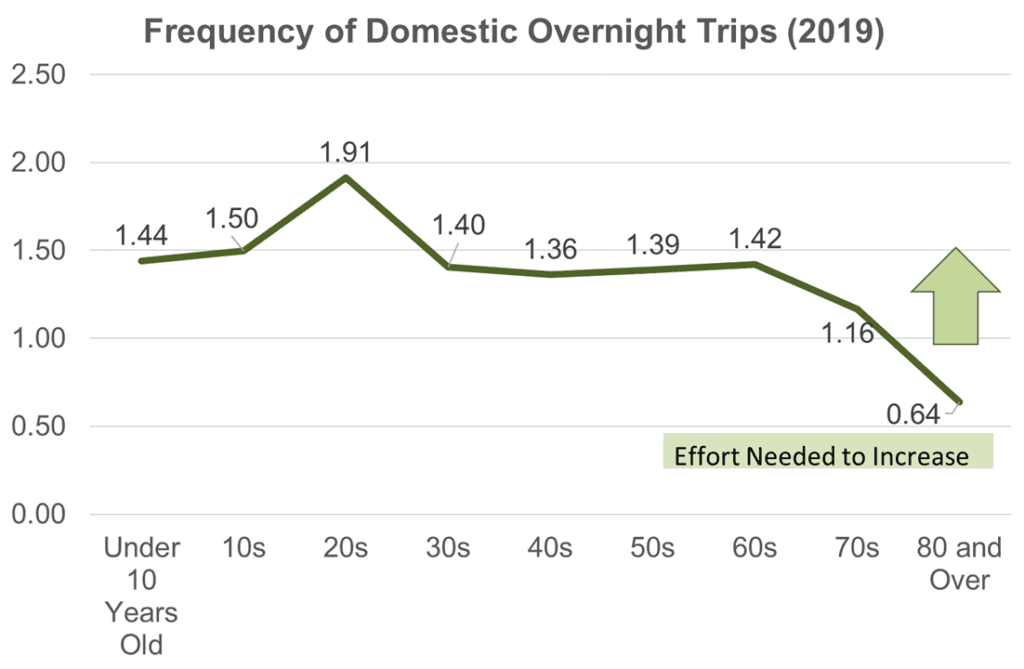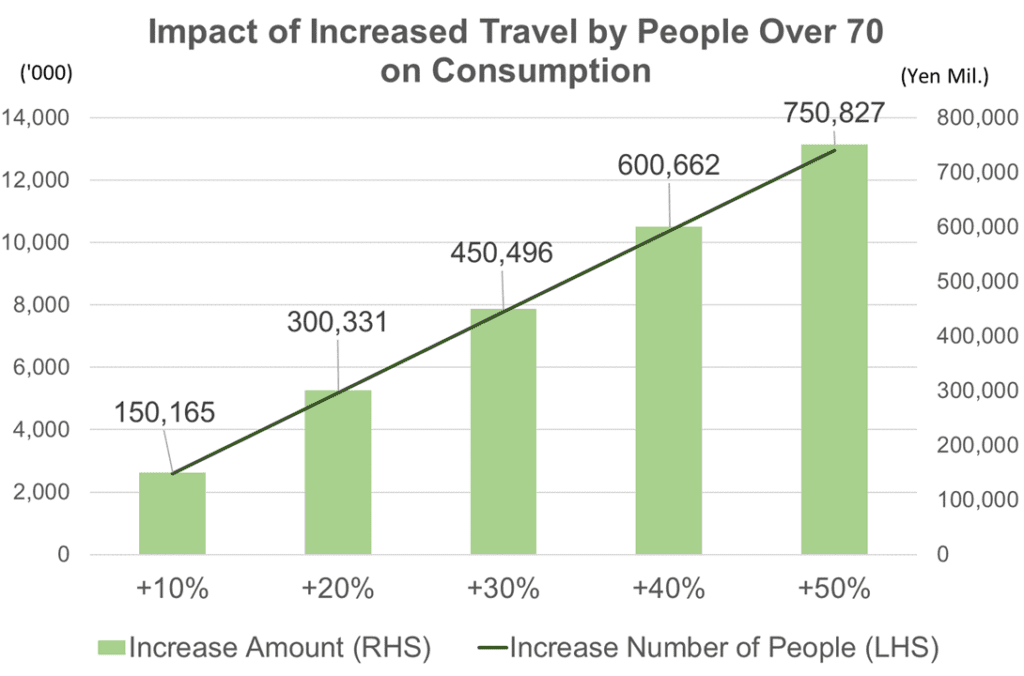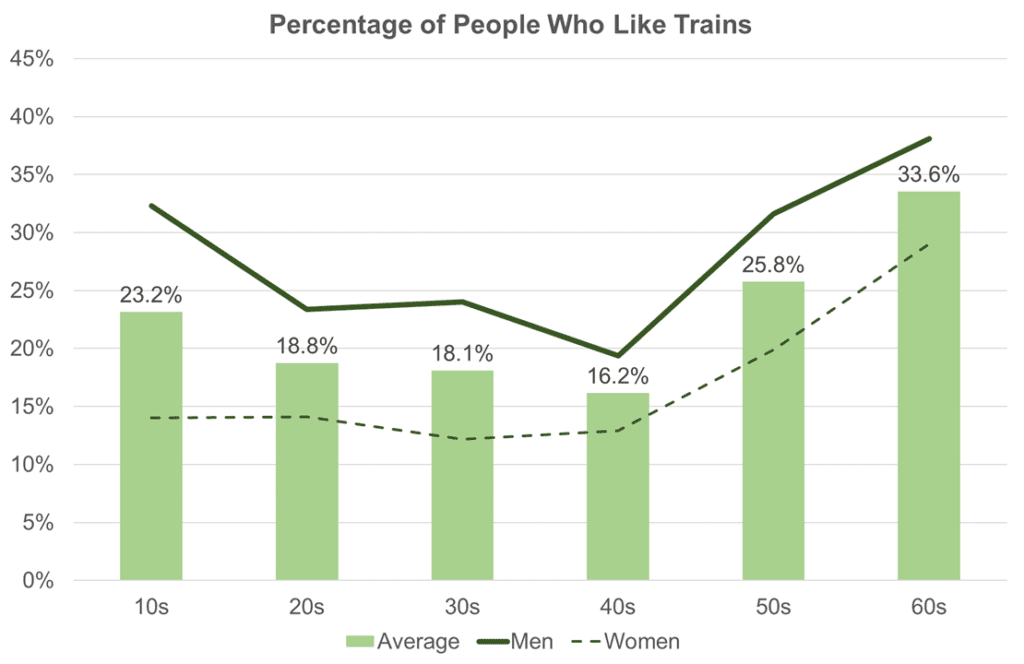The Significant Economic Impact of Increased Travel Frequency Among Seniors: An Analysis of the “Travel Divide” (6)
Our last post commented on how increased travel frequency can lead to greater happiness, reduced dementia cases, and lower social costs. This time, we will analyze the potential significant economic impact of increased travel frequency among seniors.

First, let’s examine domestic overnight trips. Pre-pandemic data from 2019 shows that the average frequency of domestic overnight trips was 1.36 times per year for all age groups. However, this number drops to 1.16 times for people in their seventies and further to 0.64 times for those aged over eighty, according to the Japan Tourism Agency’s “2019 Travel and Tourism Consumption Trends Survey Annual Report.” This highlights a ‘Travel Divide’ among seniors.

Source: Japan Tourism Agency “2019 Travel and Tourism Consumption Trends Survey Annual Report”

We analyzed a scenario where the travel frequency of seniors aged 70 and above increases. Based on the average travel expenditure of 57,973 yen for this age group, a 10% increase in their travel frequency could result in an economic impact of 150.2 billion yen, a 20% increase could lead to 300.3 billion yen and a 30% increase could mean a staggering 450.5 billion yen. This significant effect is partly due to the high population ratio of seniors over 70, which stands at 23% (Ministry of Internal Affairs and Communications “Population Estimates as of October 2022“). While the total domestic overnight travel expenditure in 2019 was a massive 17.156 trillion yen, an additional several hundred billion yen would be a substantial economic boost.

Source: Japan Tourism Agency “2019 Travel and Tourism Consumption Trends Survey Annual Report,” Our calculations
Furthermore, since many seniors are fond of railways, an increase in travel frequency could lead to more passengers on local lines struggling with deficits (Sirabee Editorial Department). Local governments should actively work to increase travel frequency among seniors.

Source: Sirabee Editorial Department
Alongside the direct impact on the travel industry, considering the previously analyzed dementia prevention benefits and the resulting reduction in social costs, it becomes clear that various initiatives are necessary to increase travel frequency among seniors who have both the time and money. As we pointed out in “An Analysis of the ‘Travel Divide'(3),” the likelihood of ‘heavy luggage’ being a reason for decreased travel frequency suggests the need for infrastructure that enables seniors to enjoy ‘lighter’ travel.
In our next discussion, we will analyze the economic impact if the senior demographic among inbound tourists increases their travel frequency.
